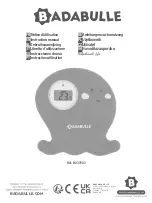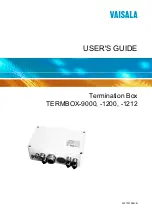
128
APPENDIX
cable connector and the corresponding wire in the cable. The sensor itself also contains
internal wires that connect to the protective earth lug.
Pin
Cable Wire
Signal Description
A
Red
DC+
B
Orange and white stripe
Data bus 485+ (Sensor port 2)
C
Orange
Data bus 485- (Sensor port 2)
D
Drain / Shield
Drain
E
Blue and white stripe
Control 485+ (Sensor port 1)
F
Blue
Control 485- (Sensor port 1)
G
Black
Common (Ground)
H
----
Reserved
Table A.1 – Pinout for Power and Communication Signals
Creating Custom Cables
Proper connector crimping tools are necessary to create custom cables. The SmartSensor
6-conductor cable connector uses a MILC-C-26482 Series 1 connector, crimping contacts
and a watertight back shell. A kit with these parts can be ordered directly from Wavetronix.
Size 20 contacts are used to accommodate the 20 and 22 AWG wires in the cable. (The
SmartSensor 6-conductor cable’s red and black wires provide a 20 AWG wire pair. The
other pairs on the SmartSensor 6-conductor cable are 22 AWG and are normally used for
communication.)
Follow the steps below to create a custom cable (see Figure A.2):
1
Slide the strain relief, follower, grommet and back shell over the cable.
2
Strip the cable jacket and shielding back about 11/2 in. (4 cm).
3
Strip each of the seven SmartSensor cable wires back about 1/4 in. (0.6 cm).
4
Insert the wires into the contacts and verify the wire is visible through the contact
inspection hole.
5
Crimp the wires by following the crimping tool instructions. Daniels Manufactur-
ing Company provides professional grade crimping tools and detailed instructions on
crimping. Wavetronix recommends the DMF AF8 M22520/1-01 or equivalent tool
for crimping.
6
Manually press the contacts into the back side of the connector plug.
7
Use a DMC DAK20 (or equivalent) insertion tool to fully seat the contact into the
connector plug. Check the mating face of the connector to ensure that all the contacts
are fully inserted. A DMC DRK20 extractions tool (or equivalent) is necessary to
remove a misplaced or misaligned contact.
8
Thread the back shell onto the connector plug. To keep the connector from rotating
during the threading process, connect the plug and coupling ring to a sensor connector








































